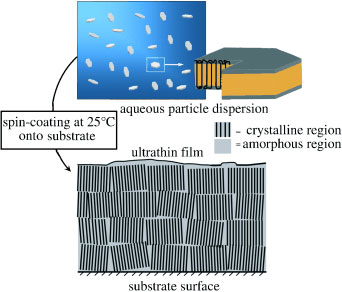| Posted: June 3, 2008 |
Ultrathin polyethylene films made of nanocrystals |
|
(Nanowerk News) Layers of plastic, much thinner than a strand of hair—this type of ultrathin polymer film is of great interest to scientists and engineers. Applications include protective coatings, for example. A research team led by Stefan Mecking at the University of Konstanz has now developed a new method to produce wafer-thin layers. As reported in the journal Angewandte Chemie, the scientists made their films from individual prefabricated nanocrystal building blocks ("Crystalline Polymer Ultrathin Films from Mesoscopic Precursors").
|
 |
|
The conventional method for the production of ultrathin polymer films (films with a thickness of less than 0.1 µm) begins with a dilute solution of the polymer in an organic solvent, which is applied to a surface. In order to break up the crystalline structure of the solid polymer to get it into solution in the first place, high temperatures are usually required. The ordered crystalline layer only forms once the solvent is removed or cooled.
|
|
Mecking and his co-workers have taken a completely different approach that works at room temperature and without organic solvents. The polymer of choice was polyethylene (PE), a polymer with a simple chemical structure and a broad spectrum of technical applications ranging from films and packaging materials to technical components or implants. PE is physiologically harmless and environmentally friendly—but has been hard to produce in ultrathin films.
|
|
The catalytic polymerization of ethylene with nickel complexes produces aqueous dispersions of crystalline polymer particles. These are individual, separate single crystals consisting of crystalline lamella of about 25x6 nm surrounded by an amorphous (noncrystalline) layer with a thickness of 1 nm. Amorphous domains on the surface are a typical occurrence in polymer crystals. Droplets of this aqueous dispersion are applied to a glass slide and spun at 2000 revolutions per minute (spin coating). Excess liquid is spun away, leaving behind a wafer-thin uniform film with a thickness of 50 nm.
|
|
The success of this attractive production technique rests on the amorphous domains around the single crystals in combination with the tiny size of the crystals. Although the amorphous domains only comprise a tiny portion of the volume of the particles, they interact very strongly with each other, holding the individual particles solidly in the film.
|

